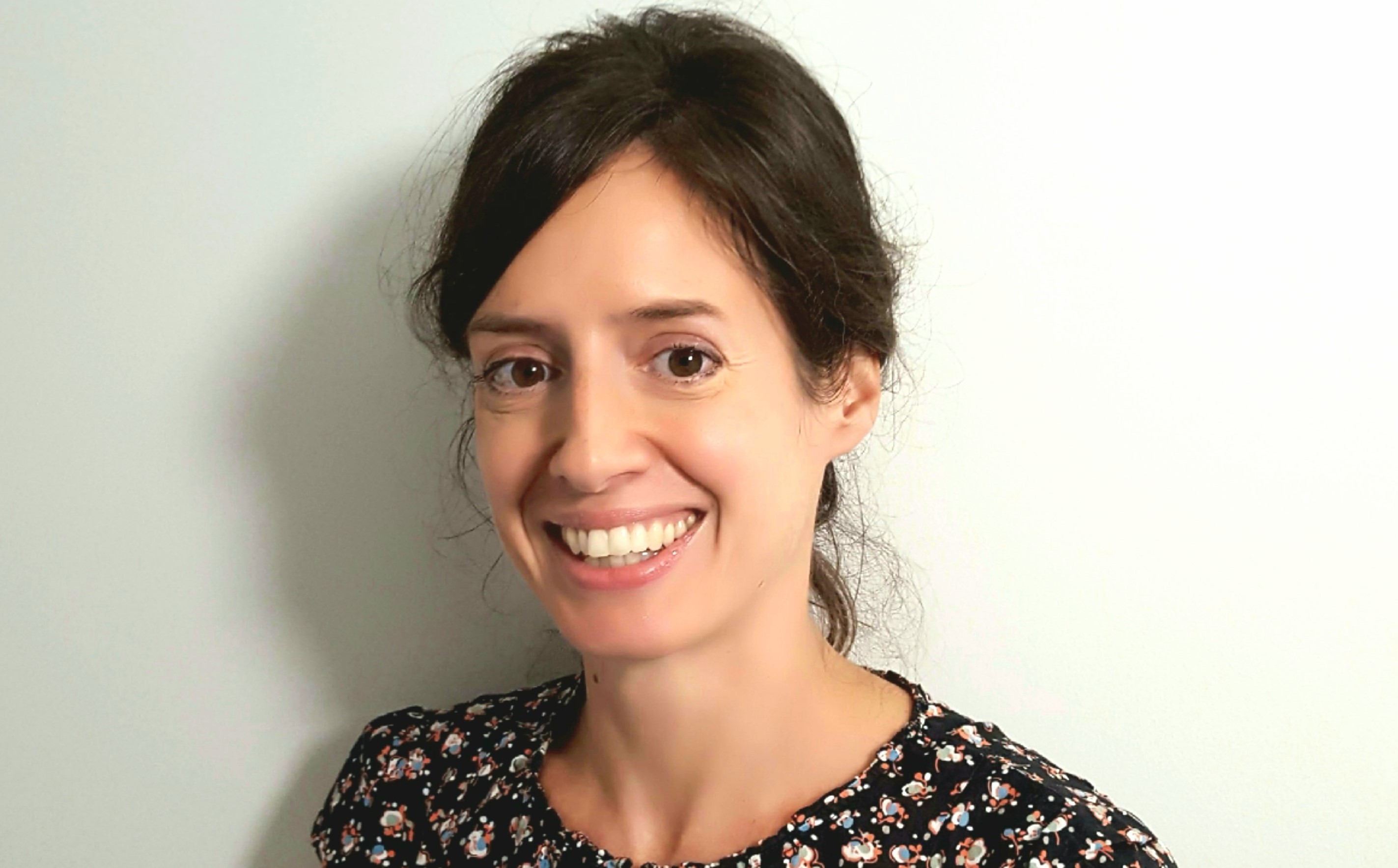Today the Department for Education has published data showing how many pupils were offered a place at their preferred school for entry this September. The headlines show that 93.0 per cent of secondary applicants and 97.5 per cent of primary applicants were offered one of their top three preferences.
But these headline statistics tell us only part of the story. Given that the school that a pupil attends has an impact on their later life chances we need an admissions system that provides fair access to school places for all pupils, in all parts of the country. Our own research suggests that we don’t yet have that.
The likelihood of families getting their first choice of secondary school has actually been falling in recent years. So, behind the headline statistics, we find that around one-in-twenty pupils were offered a school in 2019 that they didn’t even apply to. This reflects rising demand for secondary places – with the number of applications at its highest level for 12 years – stemming from a baby boom in the 2000s. [1] This created a ‘population bulge’ in primary schools which is now moving through secondary schools.
To try to keep pace with rising demand, the government created over 920,000 extra mainstream school places between 2010 and 2018, comprising two-thirds primary and one-third secondary.[2] Consequently fewer primary and secondary schools were at or over capacity last year, having been on a long-term upward trend at primary.
But rising demand for places poses other challenges for government, such as managing funding and workforce pressures. Despite the 10 per cent growth in pupil numbers since 2010, teacher numbers have held steady. This means pupil-to-teacher ratios have risen from around 15.5 in 2010 to nearly 17 by 2018.[3]
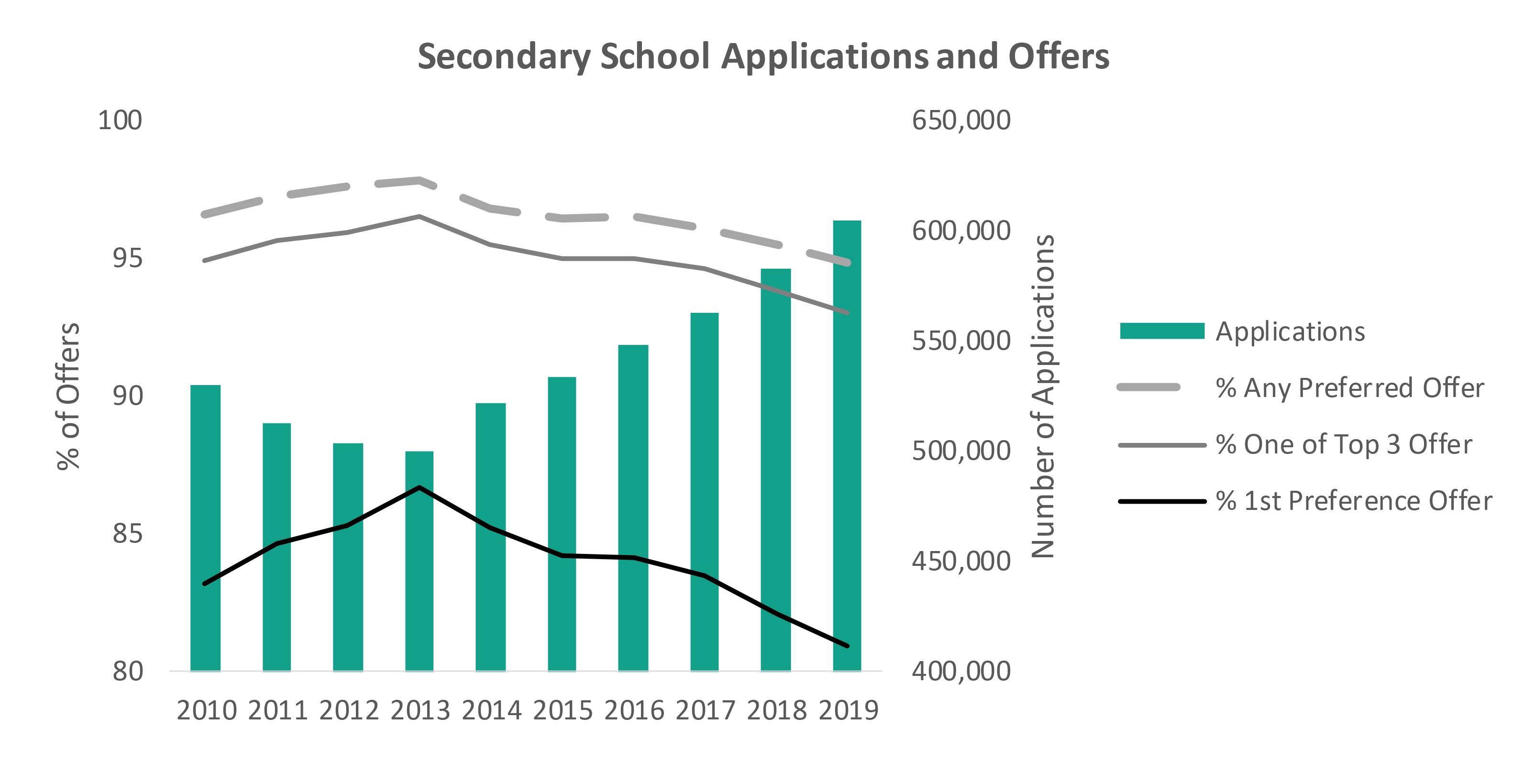
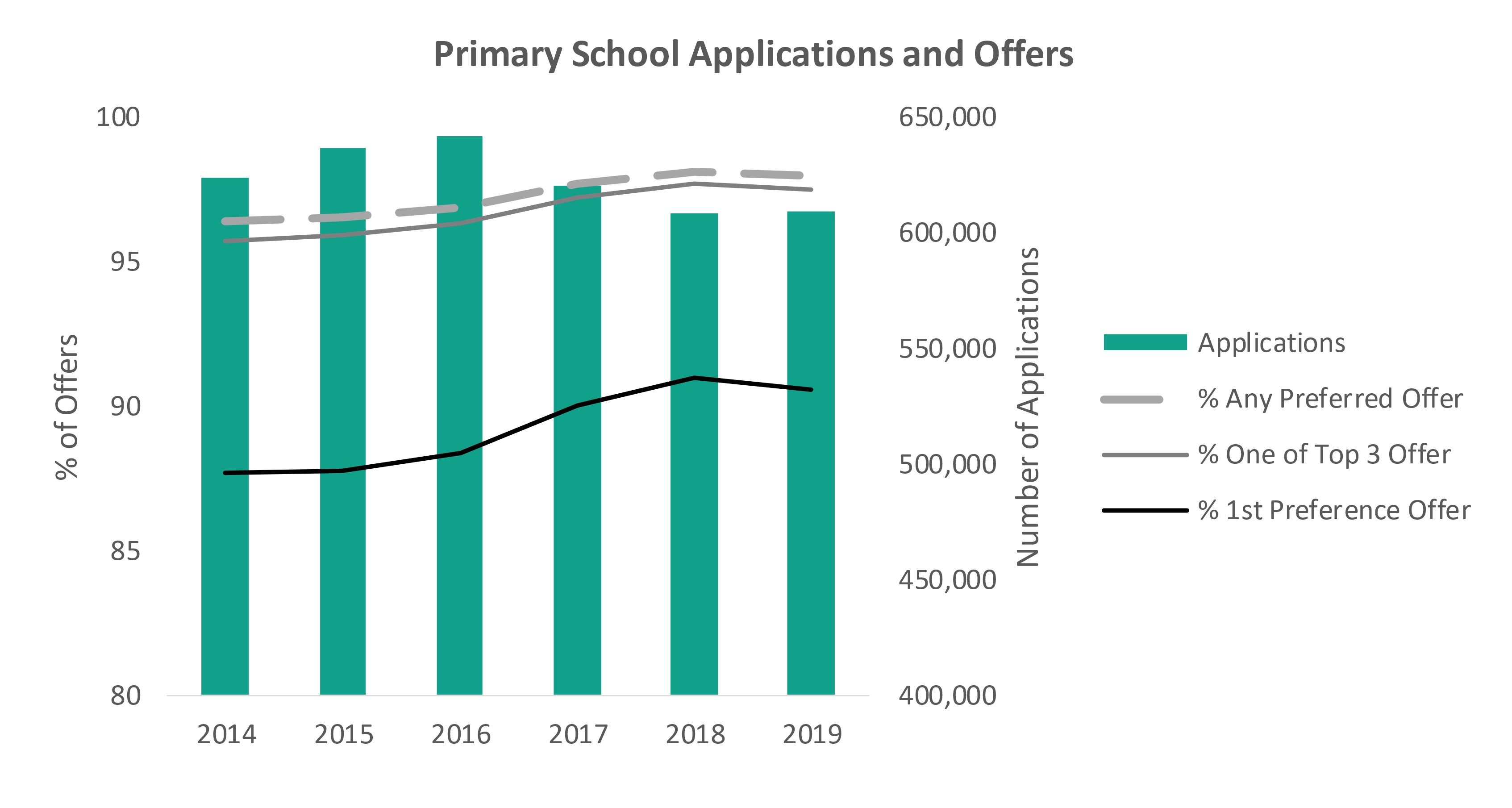
Note: National Offer Day was only introduced in 2014 at primary level, which was the first year that primary data were collected and published
Regional trends
Today’s data also show again big differences according to where pupils live. Pupils are much less likely to be offered their first choice of primary or secondary school in London than in the North East and South West. And at local authority level, the geographic gaps are even more marked.
Of the ten local authorities with the lowest shares of first choice offers in England, all but one are in London (with the exception being Slough.) The higher number of practical options available to Londoners and their ability to name six preferences may encourage parents to make more speculative choices. However, these boroughs also tend to have high total volumes of applicants relative to the number of school places available. In Lewisham, there are 135 secondary applicants for every 100 places available – and consequently, 1 in 12 of these pupils end up not being offered a place at any school (compared to 1 in 200 nationally). By contrast in Northumberland, virtually all families secure their top choice of school.
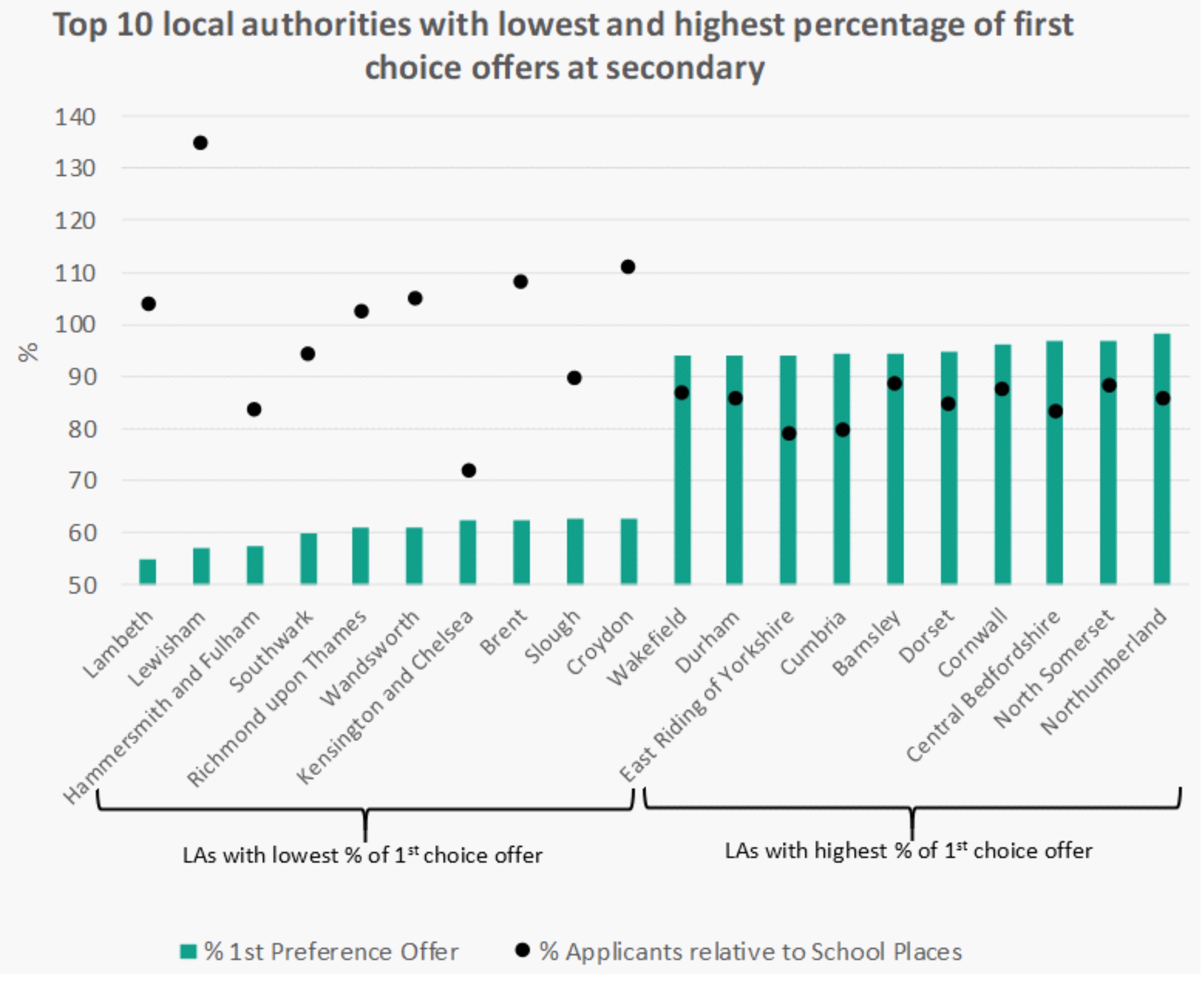
Note: City of London has a tiny number of applications and no secondary schools so is not shown
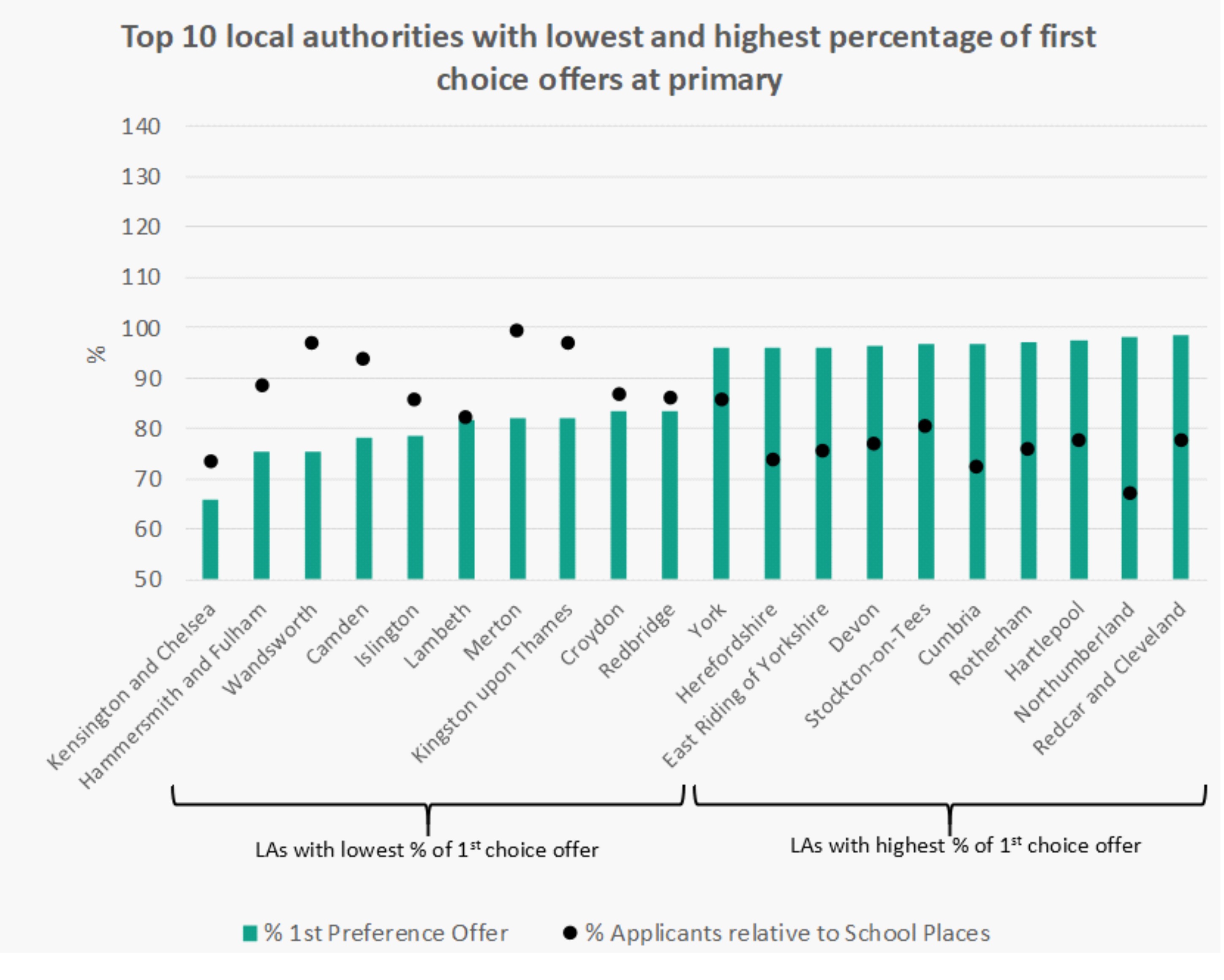
Data gaps: which families are losing out?
Today’s statistics tell us nothing about demographics – specifically whether pupils with certain characteristics are more likely to be offered their preferred school.
Our own research shows that White British families are more likely than Black, Asian and minority ethnic (BAME) families to get offered their first choice of secondary school, and that these ethnic gaps are only partly explained by where people live (with higher competition for places in more ethnically diverse, urban areas). [4] Pupils with English as their first (as opposed to an additional) language are also much more likely to get offered their first choice, as are (to a lesser extent) better off pupils relative to their peers eligible for the Pupil Premium.
To make more sense of what’s going on here, it is helpful to consider the sorts of schools that parents apply to in the first place. Our work shows that BAME families are more likely to apply to schools rated as good or outstanding than White British families and – whilst there are issues with the reliability of Ofsted judgments[5] – these schools are more competitive to get into. This partly – though not entirely – explains why BAME families are less likely to be offered their first choice and is consistent with other research pointing to different attitudes to education, with ethnic minority families more likely to travel to seek out schools with better academic performance. [6]
After offers: appeals and waiting lists
Today’s figures are also just the first stage of the process and may not ultimately reflect the schools where pupils end up this September or beyond. Parents who are dissatisfied with their offer may decide to appeal, put their child’s name down on a waiting list, or seek an alternative education such as home-schooling or the independent sector. We recently produced the first detailed analysis of the later stages of the choice process and found that one-in-seven secondary school pupils do in fact end up in their first preference school, having not been offered it initially – though with marked variation by geography. [7]
These pupils tend to have the same characteristics as those who are more likely to get their first choice on National Offer Day – they are disproportionately White British, better off and speak English as their first language. Crucially when we then looked at the characteristics of the schools that are accessed using appeals and waiting lists, we found that they are overwhelmingly rated as good and outstanding and – even allowing for this – have socially advantaged intakes relative to their local communities.
A review of admissions is urgently required
Taking a step back, this builds a picture of a system of school choice whereby certain families are systematically losing out. Not just at the offers stage but at later stages too. Appeals and waiting lists are perpetuating inequalities in access to preferred and good schools, and increasing social segregation. More research and better data are needed to understand the underlying causes of these inequalities but it is clear the system works against the government’s aim that “wherever they live and whatever their background, children deserve the best in education”.[8] The government has previously promised a review into school admissions which has not yet happened. Our research indicates this is now pressing.
[1] https://www.gov.uk/government/news/continued-success-in-parents-securing-their-top-picks-of-school
[2]https://assets.publishing.service.gov.uk/government/uploads/system/uploads/attachment_data/file/789595/School_Capacity_2018_Commentary_v3.pdf
[3] https://epi.org.uk/publications-and-research/the-teacher-labour-market-in-england/
[4] https://epi.org.uk/publications-and-research/secondary-school-choice-in-england/
[5] https://epi.org.uk/publications-and-research/school-inspection-england-room-improve/
[6]https://assets.publishing.service.gov.uk/government/uploads/system/uploads/attachment_data/file/732881/Secondary_school_choice_and_selection.pdf
[7] https://epi.org.uk/publications-and-research/appeals-and-waiting-lists/
[8] https://www.gov.uk/government/news/continued-success-in-parents-securing-their-top-picks-of-school

